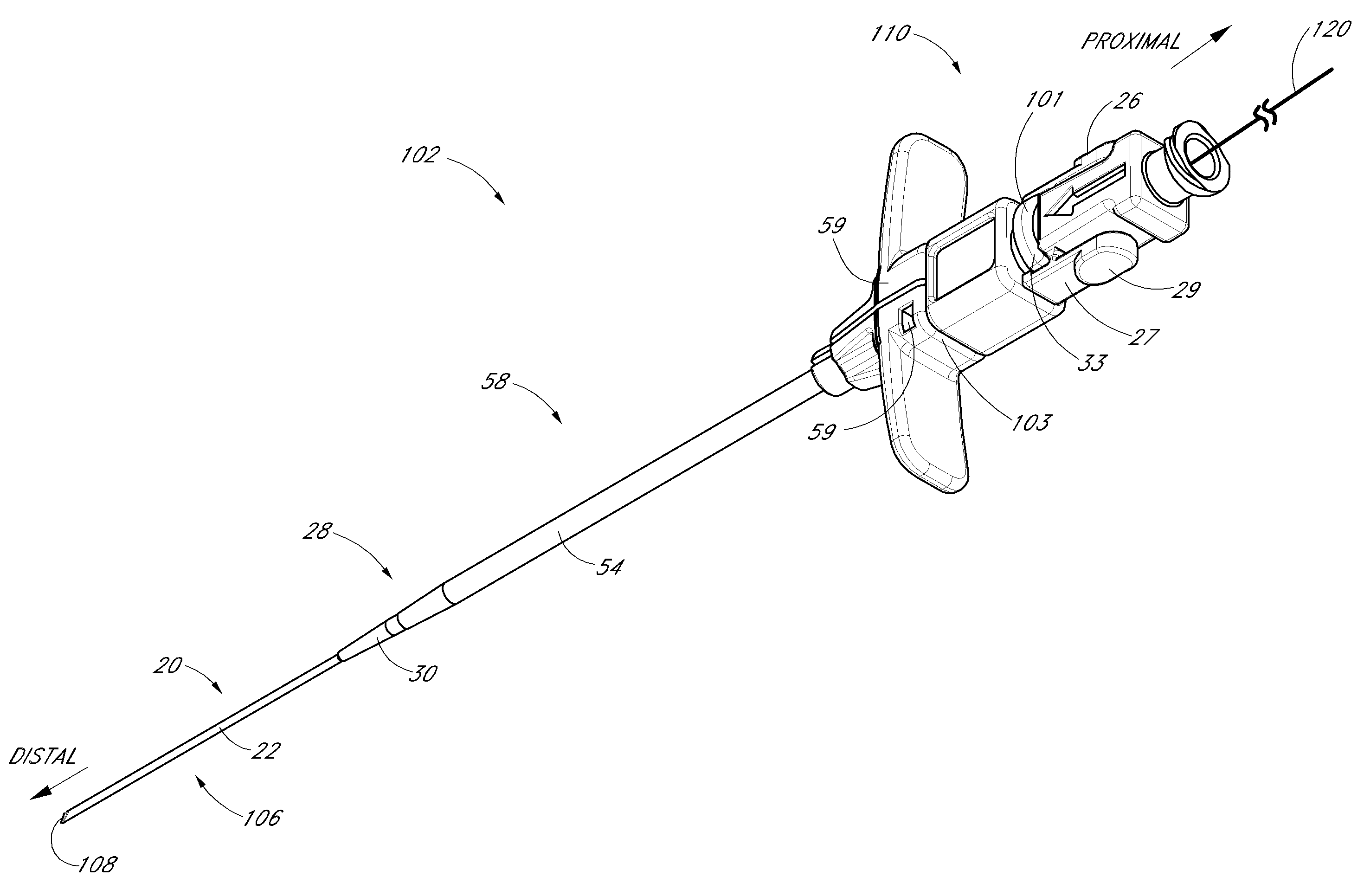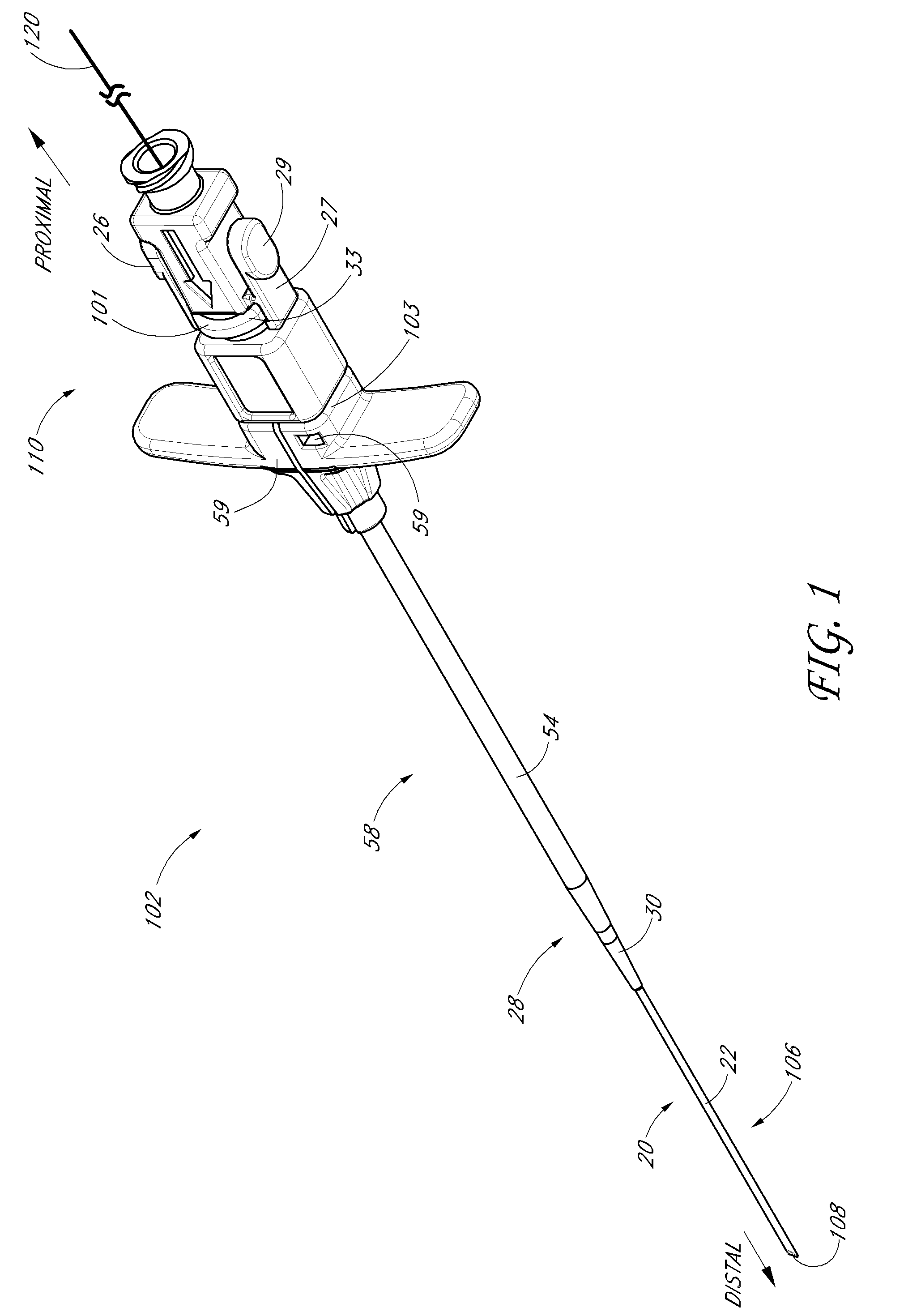Access device
a technology for access devices and access points, applied in the field of access devices, can solve the problems of loss of intravascular guidewires, ease and safety of use of none of these devices,
- Summary
- Abstract
- Description
- Claims
- Application Information
AI Technical Summary
Benefits of technology
Problems solved by technology
Method used
Image
Examples
Embodiment Construction
[0045]The present disclosure provides an access device for the delivery of a medical article, for example a catheter or sheath, to a blood vessel or drainage site that overcomes possible disadvantages associated with conventional non-surgical catheter insertion techniques.
[0046]The present disclosure provides an access device for the delivery of a medical article (e.g., catheter or sheath) to a blood vessel or drainage site. FIG. 1 illustrates an access device 102 that is configured to be inserted into a blood vessel (e.g., a vein or an artery) in accordance with a preferred embodiment of the present invention. While the access device is described below in this context (i.e., for vascular access), the access device also can be used to access and place a medical article (e.g., catheter or sheath) into other locations within a patient's body (e.g., a drainage site) and for other purposes (e.g., for draining an abscess).
[0047]The present embodiment of the access device is disclosed in ...
PUM
 Login to View More
Login to View More Abstract
Description
Claims
Application Information
 Login to View More
Login to View More - R&D
- Intellectual Property
- Life Sciences
- Materials
- Tech Scout
- Unparalleled Data Quality
- Higher Quality Content
- 60% Fewer Hallucinations
Browse by: Latest US Patents, China's latest patents, Technical Efficacy Thesaurus, Application Domain, Technology Topic, Popular Technical Reports.
© 2025 PatSnap. All rights reserved.Legal|Privacy policy|Modern Slavery Act Transparency Statement|Sitemap|About US| Contact US: help@patsnap.com



